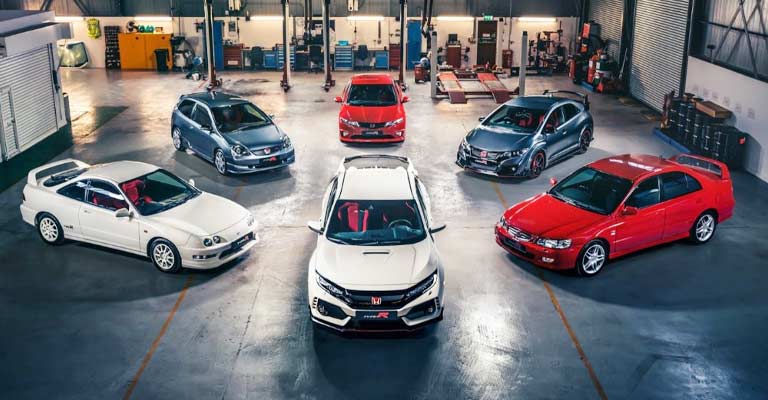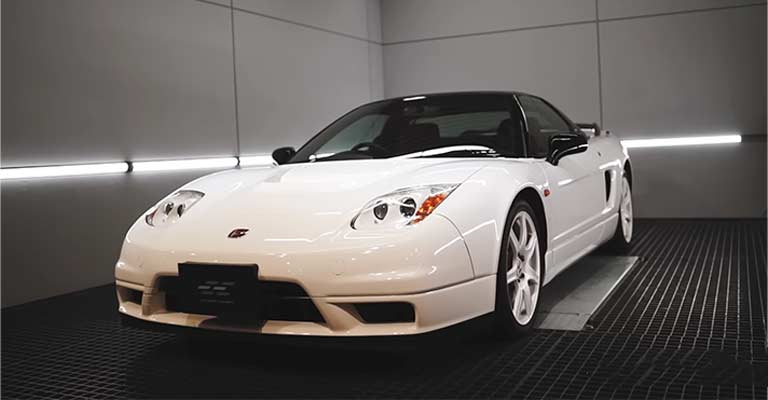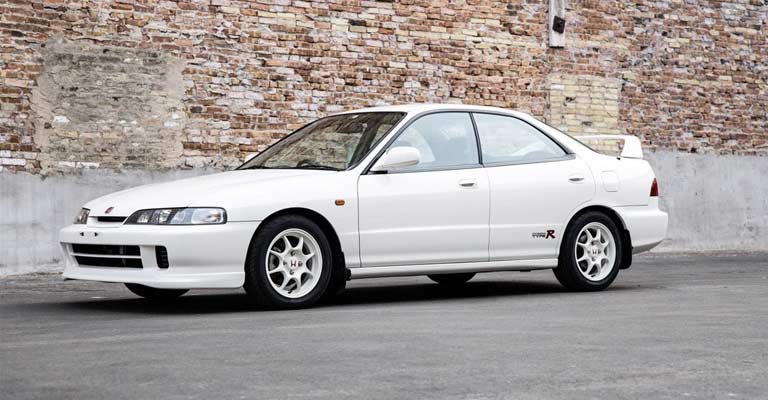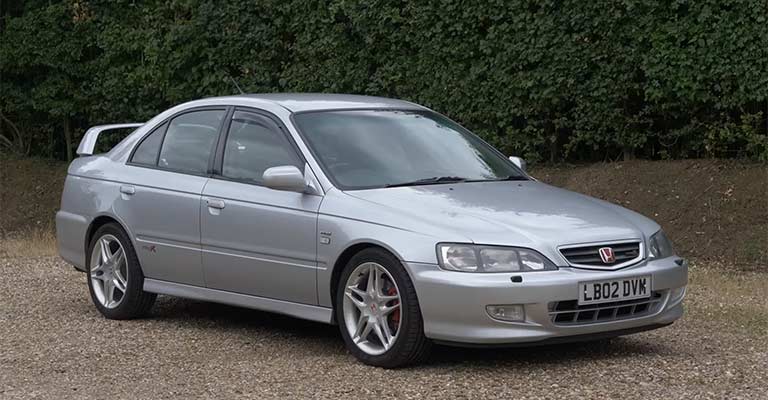We all know about the new Honda Civic Type R. It is finally arriving in 2024! We have covered a useful article on it, you can read it by following the link.
But how long did it take for Honda to reach this point? The Type R models are the premium products of Honda. Many tests and validations went through to deliver this iconic sports car.
That’s why, it’s a valid point to discuss all lineups of Honda Type R models. Let’s look back in time and figure out, the different versions of Type R Honda had over time in history.
Let’s start.

Key Points
Honda’s highest-performance models carry this label that was initially reserved exclusively for the racetrack. With respect to Honda’s sporty image, many of the standard models have their Type-R variant which is powered by the strongest engines, lightened and simplified bodywork, revised suspension and brake system, as well as the aesthetic details.
- Honda Type R models were introduced in 1992 with the NSX Type R. The models deliver a more exhilarating driving experience.
- Being one of the most popular models, it features a powerful turbocharged engine, sport-tuned suspension, and aerodynamic elements.
- The Type Rs are also Honda’s favorite. The company incorporates advanced technology in Type Rs, such as adaptive dampers and performance-oriented functions like limited-slip differentials.
- The latest Civic Type R set a Nürburgring lap record for front-wheel-drive cars. It highly showcases the impressive on-track capabilities.
- Honda continues to refine and innovate the Type R lineup. Each new model brings improvements in performance, handling, and overall driving enjoyment.
All Type R Hondas: Accord, Integra, Civic
We all know of the Honda Civic Type R. If you don’t, have a look here. Today, it’s about all the Type R family of Honda, past – present and in the future too. Let’s begin.
1) Honda NSX Type R

So we begin of course, with the Honda NSX, and the very first Type R model. The aim was to basically develop a road-going racing car, hence the ‘championship white’ paint job and red Honda emblem/ppm.
1992-1995 (Japan):
The first Honda to wear the red Type R badge was the Honda NSX Type R supercar, which was available in limited numbers from 1992 to 1995. Just 500 were sold.
The supercar’s suspension was returned to be even more aggressive, and weight was reduced by more than 200 pounds through the elimination of sound-deadening materials, power windows, air conditioning, and the audio system. NSX Type R was available only in Championship White, which recalls Honda’s first Formula 1 race car in the 1960s.
Power came from a 3.0-liter naturally aspirated V6 producing 276bhp at 7,300rpm, and 217 lb-ft of torque at 5,400rpm, though the car was only available in Japan. Boo.
2002-2006 (DC5) (Japan):
Sold exclusively in Japan, an all-new Integra Type R based on the fourth-generation Integra featured a new 2.0-liter i-VTEC® engine with 220 hp, a close-ratio 6-speed manual transmission, a lightweight flywheel for better engine response and a helical limited-slip differential.
Chassis enhancements included Brembo brakes with four-piston calipers, stiffer springs and shocks, and 17-inch wheels with Bridgestone Potenza tires.
Inside were Recaro seats and a Momo steering wheel, along with aluminum pedals. While the Type R lacked many creature comforts, some could be added with an options package, broadening its appeal. A total of about 14,000 were sold.
It’s JDM special, featuring a 3.2-liter V6 with 276bhp and 224 lb-ft of torque. It got the same meticulous attention to weight loss as its predecessor (lack of sound insulation, nor air-con, no power steering, thinner glass, and Recaro seats), too, and weighed in at around 1270kg.
It was also, as you would have guessed, bloody magnificent.
2) Honda Integra Type R

The first Integra Type R to reach European and American shores, and some cars too. The 1.8-liter four-cylinder motor produced less than its JDM-only predecessor (187bhp and 131 lb-ft), but featured – as most Type Rs did – a manic 8,000 redline.
Then there’s the thinner windscreen glass, lack of sound-deadening, a stiffer chassis, and limited slip diff. It weighed in at just 1100kg, could hit 0-60mph in 6.5 seconds, and topped out at 143mph.
1995-2001 (DC2) (Japan, U.S.):
The Integra Type R debuted in Japan in 1995, powered by a 197-horsepower 1.8-liter VTEC® 4-cylinder engine.
Extensive modifications in the Integra Type R included a hand-built engine with hand-polished intake and exhaust ports, high-compression pistons, a revised intake system, a retuned exhaust, and a helical limited-slip differential.
Chassis modifications included suspension, tire, wheel, and brake upgrades, and the body received additional bracing and seam welds for added strength and rigidity.
Weight reduction measures included the removal of sound insulation, a thinner windshield, lightweight wheels, and the removal of the air conditioning and audio systems.
2002-2006 (DC5) (Japan):
Sold exclusively in Japan, an all-new Integra Type R based on the fourth-generation Integra featured a new 2.0-liter i-VTEC® engine with 220 hp, a close-ratio 6-speed manual transmission, a lightweight flywheel for better engine response and a helical limited-slip differential.
Chassis enhancements included Brembo brakes with four-piston calipers, stiffer springs and shocks, and 17-inch wheels with Bridgestone Potenza tires.
Inside were Recaro seats and a Momo steering wheel, along with aluminum pedals. While the Type R lacked many creature comforts, some could be added with an options package, broadening its appeal. A total of about 14,000 were sold.
Hammond was a fan, too. “This was one for the purist, the serious enthusiast”, he said.
This second-gen Integra was only available in Japan but was the first Type-R model to feature a 2.0-litre four-cylinder engine. This one produced a very healthy 218bhp (at 8,000rpm, of course) and 152 lb-ft of torque, too.
3) Honda Accord Type R

The Honda Accord Type-R (ATR) was produced from 1998 to 2002 using the CH1 Accord chassis and sold in European markets. Only 1983 units of this model were manufactured. The JDM Accord Euro-R uses the CL1 chassis.
It belonged to a category of car that effectively no longer exists: the sports saloon. Once populated by Mercedes 190 2.3s, Peugeot 405 Mi-16s, and brawny but compact six-cylinder 3-series, their modern equivalents have grown portly, the more blue-collar models have been absorbed by crossovers, and M3s and C63s now occupy a different space entirely.
1998-2001 (CH1) (Europe):
Based on the European Honda Accord sedan, different from the U.S. Accord, the first Accord Type R debuted with a 209-hp 2.2-liter 4-cylinder engine mechanically related to the engine used in the U.S.-market Prelude VTEC®.
The sedan also featured a stiffer suspension and reinforced chassis, a helical limited-slip differential, dual exhaust, lightweight 17-inch wheels, and Recaro front seats.
2000-2002 (CL1) (Japan):
Known as the Euro R, the Japanese-market Accord Type R was sold from 2000-2002. Although visually distinct from the European Accord, the Euro R featured many of the same features, including the engine, drivetrain, suspension, chassis, and interior updates.
One primary difference was the engine, as the new “red top” version of the H22A engine made 217 hp in the Japan-only Euro R.
2002-2008 (Japan):
The second Accord Type R was sold exclusively in Japan as the Euro R. Powered by a 2.0-liter i-VTEC® 4-cylinder similar to the one powering the 4th-generation Integra Type R, and producing 217 hp. Just 200 were sold. Like its predecessors, it featured a helical limited-slip differential, upgraded suspension and brakes, and Recaro seats.
We can be thankful to Honda then for having a proper go at it before the segment disappeared. Just as they did with the Civic and Integra, Honda’s engineers turned their humdrum family wagon into a lighter, more focused sports car, complete with a screaming engine, less weight, and sharper handling.
That made the Accord Type R one of our favorite sports saloons at the time, up there with Impreza Turbos and Mitsubishi Lancer Evos, and with nothing quite like it on the modern market, it’s still a desirable performance car today.
Arguably the least exciting Type R entrant, but one no less manic for it. All the usual Type R flourishes apply – stiffer chassis, slippy diff, alloys, some R-based interior appointments, and a high-revving motor.
It’s a 2.2-liter engine this time, producing 210bhp and 158 lb-ft of torque. It was only available in Europe, too. If you wanted one.
Last Words
Here’s our tribute to the Honda Type R Family. The Japanese manufacture never ceases to amaze us.
Amongst the three types of Honda Type Rs, the Civic Type-R is a car that is way more reliable and temperamental than it has any right to be. A car that appeals to younger drivers – who tend to drive it hard and rev it to 8,000rpm -sounds like a grenade about to blow but it’s worth reminding ourselves that above all, this car is a Honda.
It regularly scores top marks in customer satisfaction surveys and will be remembered if not as an all-time great hot hatch, then certainly in the second tier of cars that never fail to raise a smile. As a used buy, it’s tough to top.

Leave a Reply